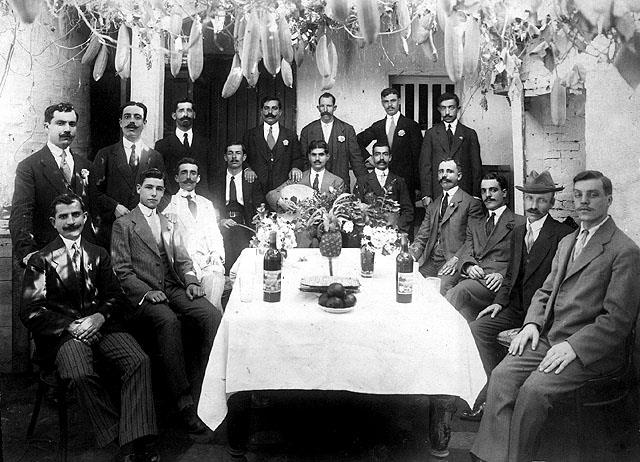
The Jewish Community of Paraguay
Paraguay
Officially: Republica del Paraguay - The Republic of Paraguay
A country in central South America. Paraguay is a landlocked country located between Argentina, Brazil, and Bolivia.
21st Century
Estimated Jewish population in 2018: 1,000 out of 6,800,000. Most Jews live in Asuncion.
A Jewish museum that includes a Holocaust center opened in Paraguay in 2013.The Walter Kochmann Jewish Museum of Paraguay contains an exhibit about Judaism, a section about the Holocaust, as well as a smaller third wing that tells the stories of Holocaust survivors who came to settle in Paraguay. The museum's Holocaust center is the first such center in the country of Paraguay.
Asuncion, the capital of Paraguay, is home to a number of Jewish organizations, including the synagogue and the Hebrew Union of Paraguay. Religious services are also held at the Chabad of Paraguay, located in Asuncion. The Chabad also includes a library, a mikva (ritual bath) and can provide visitors and locals with kosher food.
The State of Israel School (Colegio Estado de Israel, CEI) is a bilingual Spanish-English school that provides students with a Jewish and general education. The school enrolls both Jews and non-Jews.
Main Jewish organization:
Consejo Representativo Israelita de Paraguay (CRIP)
Phone: +595 21 662-336 / 447-741
Email: dejecutiva@cjp.org.py
Website: www.cjp.org.py
HISTORY
A few Jewish individuals came to Paraguay from France, Switzerland, and Italy toward the end of the 19th century. They assimilated into the local population and did not establish a Jewish community. It was not until the 20th century that a Jewish community was established in Paraguay, when a number of Sephardi Jews came to the country from Palestine on the eve of World War I. The Arditi, Cohenca, Levi, Mendelzon, and Varzan families formed the country's first chevra kaddisha (Alianza Israelita) in 1917; they also established the country's first synagogue with other Sephardim from Turkey and Greece. A second wave of immigration during the early 1920s brought Jews from the Ukraine and Poland. These new arrivals founded the Ashkenazi community, Union Hebraica.
Between 1933 and 1939 between 15,000 and 20,000 Jews from Germany, Austria, and Czechoslovakia took advantage of Paraguay's liberal immigration laws to escape the Nazis. Most then used their Paraguayan visas to move on to Argentina, Brazil, and Uruguay, where immigration laws were stricter. The small fraction that remained in Paraguay established the Union de Israelitas pro Socorro Mutuo (a mutual aid society). This group built the main synagogue, which would later be located within the property of the Union Hebraica.
Another group of immigrants, made up mostly of concentration camp survivors, arrived in Paraguay after World War II. By 1968 the Jewish community was estimated to be approximately 300 families (1,000 people). The population subsequently decreased, mainly as a consequence of members moving to Argentina, Brazil, and Israel.
Complicating life for Paraguay's Jews was the fact that during the 1960s there were approximately 40,000 Germans or people of German descent living in Paraguay, many of whom openly supported the Nazis before and during World War II. Additionally, a number of prominent Nazis, among them Josef Mengele of Auschwitz, found temporary shelter in Paraguay. There were some short-lived anti-Semitic decrees that were issued 1936 and a number of anti-Semitic incidents that occurred before the military dictatorship of General Alfredo Stroessner in 1954.
Paraguay voted for the UN resolution on the partition of Palestine in 1947. An Israeli embassy was established in the country in 1968.
Jewish organizations established during the 1960s included a sports club, a Bnai Brith, a WIZO chapter, and the HaNoar HaTziyyoni youth group. The youth organization, Centro Israelita Juvenil, was established in 1968.